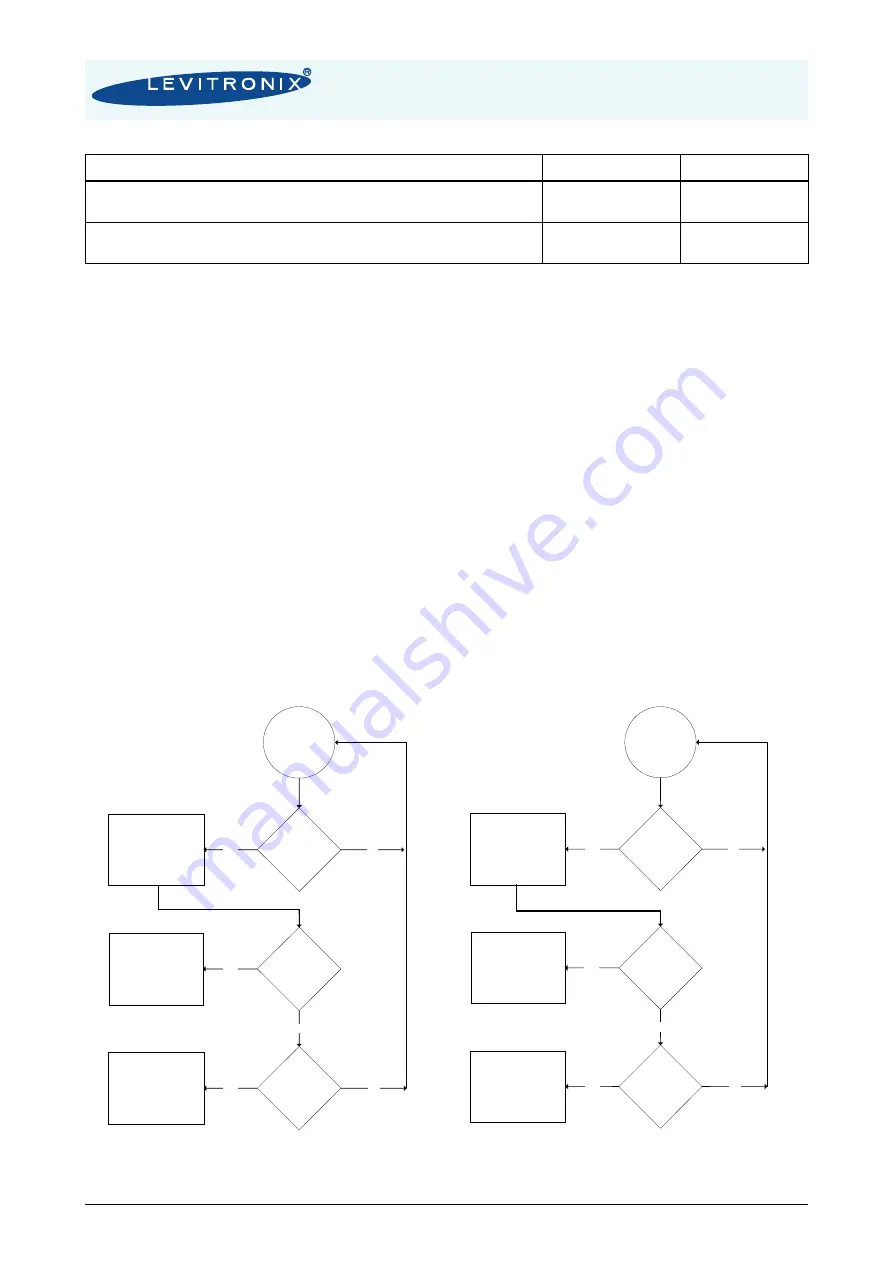
User Manual for PuraLev
®
2000SU
www.levitronix.com
PL-4034-00, Rev02, DCO# 20-144
14
Situation
I
2
t Value in [A
2
s]
Peak Value in [A]
Switch-on after complete discharge of controller (> 60 s).
For this case inrush current limiter in the controller are active.
29.3
90
Switch-on after in-complete discharge (< 60 s, worst case)
For this case inrush current limiter in the controller are not active.
350.8
1442
Table 9: Inrush currents for various AC voltage power-off/on situations
(Worst case AC input voltage of 240 V +10%)
3.2.4 Earth Leakage Current
Earth leakage currents have been measured under worst case situation and are
5 mA
.
3.2.5 Recommendations for Circuit Breaker Design
The controller contains fuses in all power input lines, which are configured for
20 A
(time lag
T
).
For the selection of external breakers above considerations about AC voltage, grid currents, inrush current
and earth leakage current have to be considered. It is recommended to test the reliability and sensitivity of
the selected breakers with the pump system in the context of the tool, where it is operated. Circuit breaker
types full-filling above considerations have following basic specifications:
-
16 A and D or K tripping characteristics
3.3 Temperature Monitoring
To avoid overheating of the system, the controller and motor temperatures are monitored. If the controller
temperature exceeds
70°C
(158°F)
or the motor temperature exceeds
90°C
(194°F)
for a duration of more
than 10
minutes, the system goes into an error state and the pump stops. At
80°C
(176 F)
controller
temperature or
100°C (212°F)
motor temperature, the system stops immediately.
Start
Temperature
Monitoring
WARNING
YES
Temperature
> 70°C ?
Temperature
> 80°C ?
YES
ERROR
Temperature
higher than 70°C
for more than 10
minutes?
NO
ERROR
YES
NO
NO
Start
Temperature
Monitoring
WARNING
YES
Temperature
> 90°C ?
Temperature
> 100°C ?
YES
ERROR
Temperature
higher than 90°C
for more than 10
minutes?
NO
ERROR
YES
NO
NO
Figure 14: Controller temp. monitoring
Figure 15: Motor temp. monitoring















































